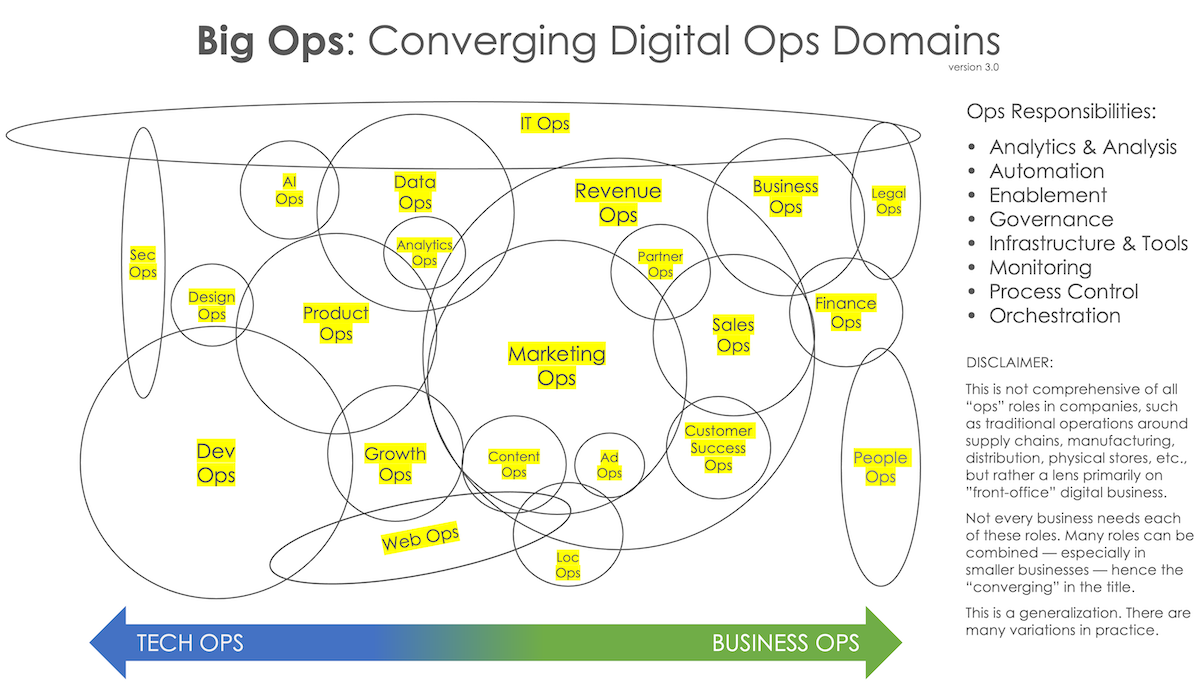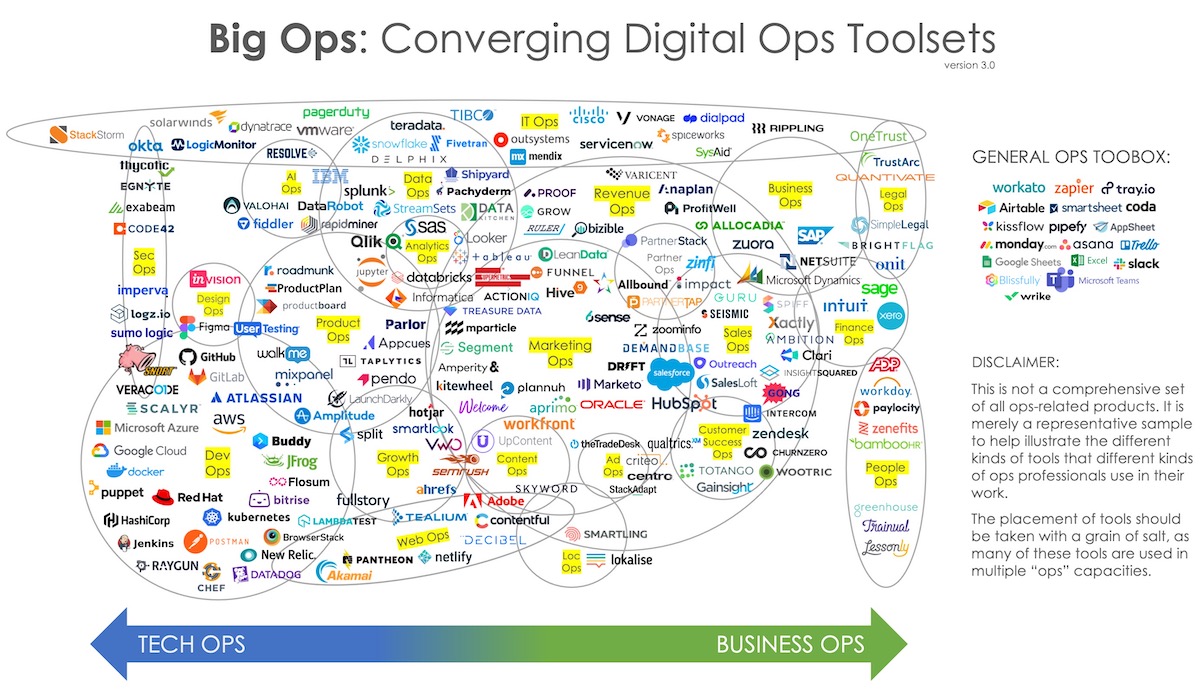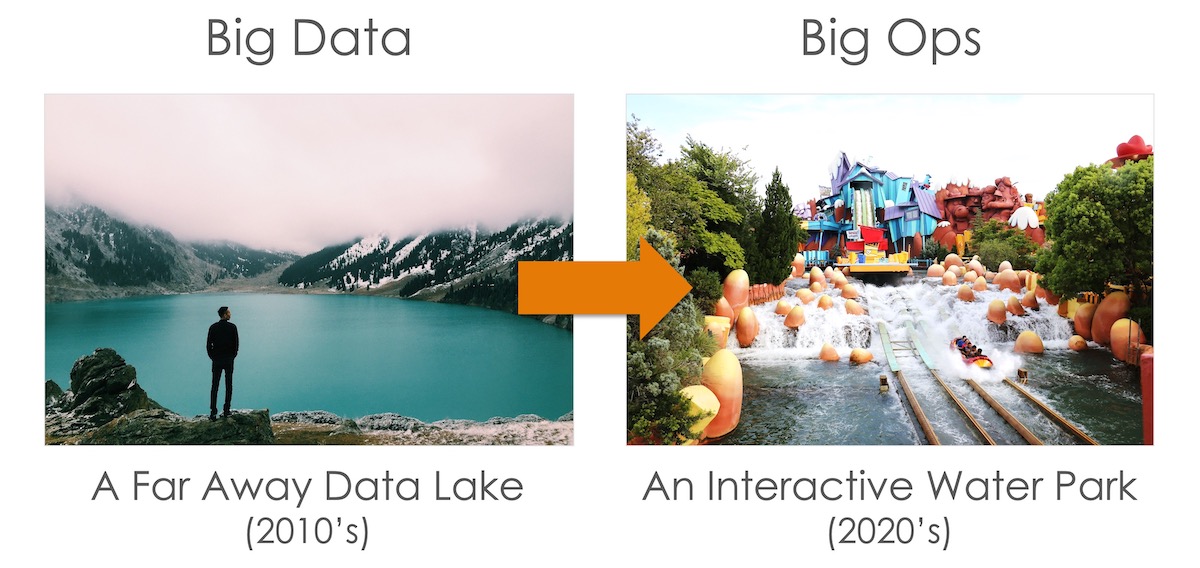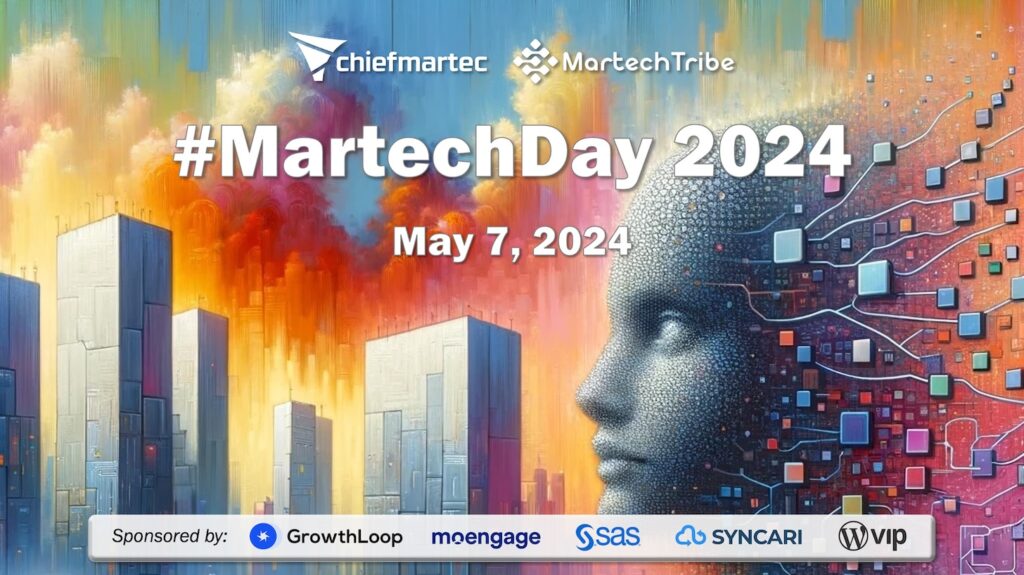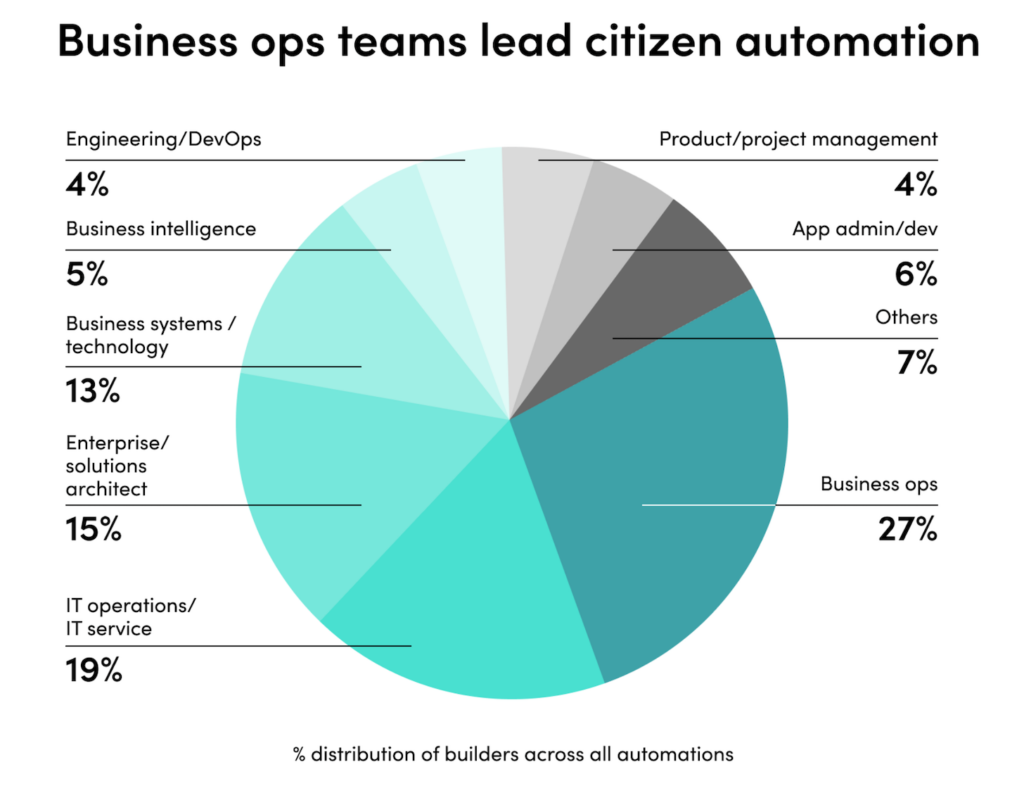Ops is sexy these days.
In martech land, it’s been a growing story around RevOps — revenue operations — that connects together marketing ops, sales ops, and customer success ops under one umbrella, often reporting up to a chief revenue officer (CRO) or chief customer officer.
The coalescence of these functions has been driven partly by shared DNA — there’s some similarity in the kinds of work each of these ops teams performs (e.g., automation, analysis, enablement, orchestration, etc.). But the bigger motivation is connecting ops across the end-to-end customer journey, aligning internal processes and instrumentation to deliver better aligned customer experiences.
But RevOps isn’t the only hot ops topic.
The past decade has seen the rise of DevOps — “a set of practices that combines software development (Dev) and IT operations (Ops).” In a cloud world, DevOps is the way that software is deployed. And per Marc Andreessen’s prediction, software has eaten the world. Like salt in a fast food restaurant menu, it’s in everything. As a result, DevOps is everywhere.
Soon, “ops” variations were popping across the organization.
Some ops roles had been around for while and just got a cooler name. IT Ops instead of IT operations. People Ops instead of HR. Business Ops. Finance Ops. Legal Ops. A certain amount of this was just being trendy. (Hey, nothing wrong with that, despite my position in high school to the contrary.) But there was also substance to these shifts, as these rechristened ops teams embraced a new generation of technologies and practices.
Other ops functions emerged as new specialties. Data Ops supporting data science. Analytics Ops as a subset of those capabilities. AI Ops (and ML Ops) adjacent to those, leveraging machine learning for data science and more advanced IT operations.
Around DevOps, related specialties such as Product Ops and Design Ops. In the context of web apps and environments, WebOps. Sec Ops running security across DevOps and IT Ops (and WebOps and Data Ops too).
There are also more specialized ops roles within the marketing and revenue domains: Ad Ops for advertising (in the context of this article, ops for advertisers rather than ops for publishers), Content Ops (closely connected with Web Ops), and Loc Ops for localization, which is often connected into WebOps, DevOps, and Product Ops too. And Partner Ops — or Channel Ops, if you prefer — orchestrating marketing and sales across a company’s ecosystem.
Growth Ops has sometimes been positioned at the intersection of marketing, sales, and customer success. But I think it’s a better fit for “growth” plays that are usually more at the intersection of marketing and product.
The illustration at the top of this post is my attempt to visually represent the relationships between these different kinds of “ops” roles.
Because I think it’s helpful to show some of the tools that these different ops roles use to make the nature of their work a little more concrete — and because, I admit it, I love clustering little logos as my own kind of Zen meditation — I also put together this graphic (click on it for a higher resolutions version):
Of course, there are a ton of disclaimers to be made.
This layout of roles is not comprehensive of all ops roles in companies, such as traditional operations around supply chains, manufacturing, distribution, physical stores, etc., but rather a lens primarily on “front-office” digital business. Not every business needs each of these roles. Many roles can be combined — especially in smaller businesses — hence the “converging” in the title. This is a generalization. There are many variations in practice.
For the ops logo graphic, I must especially disclaim that this is not a comprehensive set of all ops-related products. It is merely a representative sample to help illustrate the different kinds of tools that different kinds of ops professionals use in their work. The placement of tools should be taken with a grain of salt, as many of these tools are used in multiple “ops” capacities.
I call this whole burgeoning universe of ops roles “Big Ops.” While each of these ops specialities is a small revolution within its respective field, the collection of all of them taken together is a much larger seismic shift.
The Big Data movement of the past decade was about managing the enormous volume, variety, and velocity of data flowing through organizations. Big Ops is about the enormous scale and complexity of all the different apps, automations, AI algorithms, processes, and human interactions all operating simultaneously across that data in digital business.
I like this metaphor: if Big Data was about a data lake, Big Ops is more about an interactive data water park.
Big Ops is one of the trends Jason Baldwin, global head of product management at WPP, and I tackled in our mini-book, Martech 2030: Five Trends in Marketing Technology for the Decade of the Augmented Marketer. If you’re interested in reading more about Big Ops — and the other four trends we cover — that link will take you to a free, ungated copy.
I expect the overlaps and interconnections between all these different ops roles to grow significantly in the next few years. I’d highly recommend that marketing technologists learn more about these adjacent fields.
You’ll be doing a lot more ops collaborations together.
